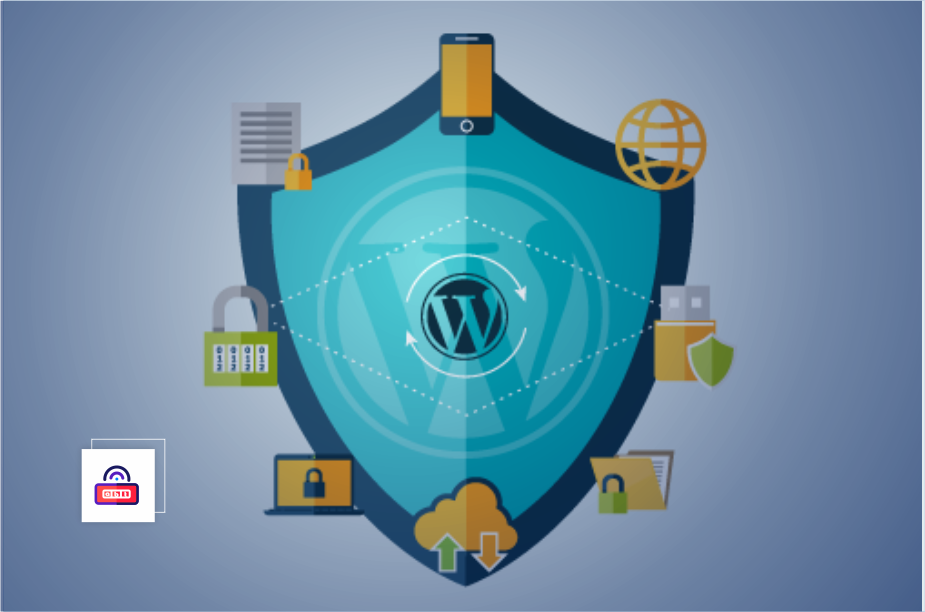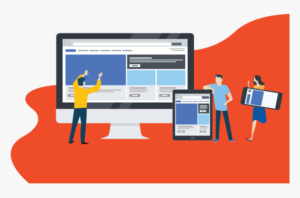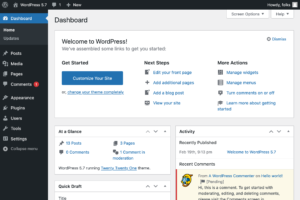The fact that WordPress is user-friendly for beginners is a significant factor in the platform’s immense popularity. It enables rapid content publication. Additionally, the CMS provides an abundance of modules and themes that can be utilized to personalize the site.
However, due to its immense popularity, WordPress has also become the most compromised content management system; if left unattended, this will result in WordPress security vulnerabilities. The presence of cyber assaults poses a challenge for proprietors of websites. They disrupt the overall functionality of a website, frequently preventing pages from loading or even bringing the entire site offline.
Further repercussions of a breach include the disclosure of sensitive information and risks to one’s reputation. It is difficult to anticipate when malicious actors will launch an assault on your website. Furthermore, this is not merely a coordinated assault. Automated intrusion attempts that concurrently target multiple websites are also prevalent.
Top Security Concerns Regarding WordPress Websites
Acknowledging and comprehending the security vulnerabilities of WordPress is crucial. Should you encounter difficulties, you will possess the necessary skills to handle them. Furthermore, this article will offer valuable perspectives on adopting a proactive stance and mitigating potential hazards. To commence, let us proceed.
1. Insecure Passwords
A lack of diligence among website proprietors exists regarding the creation of complex passwords. They believe that they should feel secure irrespective of the access credentials. This is the exact antithesis of the mindset one should strive for in order to avoid cybersecurity issues.
Passwords that are simple to predict encourage brute-force attacks by hackers. This form of intrusion employs machine learning algorithms to generate and attempt a multitude of password combinations in an attempt to locate a match for the computer. The simpler the password, the more straightforward it is to compromise an account.
Complex passwords are certainly inconvenient to remember, particularly when managing multiple online accounts. Regarding the security of your website, however, remains the focal point. You are required to be intelligent about it.
If managing a multitude of logon credentials is an overwhelming task, consider utilizing one of the numerous password managers that are readily accessible. Additionally, attempt Loginizer, a WordPress plugin that provides two-factor authentication, an attribute that is not by default available on WordPress.
A final point concerning passwords is that the aforementioned recommendations should be universally applicable, not limited to the administrator, but also to all users who possess accounts that grant backend access to the website.
2. Inadequate Updates
Many people equate system updates with enhanced overall performance and the introduction of new features. Nonetheless, a website that does not have the most recent version is also more susceptible to security threats. Developers of the WordPress platform typically release significant revisions quarterly.
While the process of downloading and installing an update may require some time, prioritizing it is essential for ensuring the website’s security. Individuals juggling a demanding schedule may inadvertently overlook the need for WordPress updates.
Enable automatic updates if this is the case, so that you have one less thing to fret about. Websites powered by WordPress that do not have the most recent security updates are an attractive target for hackers. Furthermore, the instruments employed by cybercriminals possess the intelligence to discern which websites are devoid of updates.
3. Role Definitions for Users
As long as you personally take the necessary precautions, role definition does not pose much of a concern if you are the only user administering everything on the website. Conversely, when multiple users become members, they are granted administrative privileges by default.
Users with administrative privileges are able to modify modules and publish content. Consequences of inadequate role definition for security? Neglecting to remove roles poses a dual threat to the website.
The first is by individuals who have obtained permissions. An individual could exploit their position and pose a threat from within. The second is the manner in which an authorized user could divulge personal information, thereby encouraging hackers to seize control of the website.
4. Unreliable Hosting Provider
WordPress provides the option for users to host their own content for free. Even so, relying on that to establish the credibility of your website is less than optimal. To obtain a legitimate and customized domain, you must locate and pay a dedicated hosting provider.
There is a wide array of options to contemplate. The majority of WP site proprietors prioritize cost and uptime when selecting a hosting provider, seeking the most affordable option.
Sadly, such an approach could potentially backfire. Avoiding insecure hosting is among the things you should do. Transitioning to cloud hosting is likely the most optimal course of action, despite the relatively high expenses involved.
5. Comment Spamming
While spam comments may not appear to be an overt security concern, their impact on the overall security of a website should not be underestimated. Bots that identify websites that lack security will view them favorably as a chance to post remarks that appear authentic but are, in fact, designed to redirect users to dubious URLs.
Even when a website employs a multitude of security solutions, spam is frequently unavoidable. Eliminating this is as simple as entirely disabling the remark section. Alternatively, employ the moderation function integrated into the database configurations. Each comment must undergo a manual verification process in order to be approved or declined.
6. Malware
Last but not least, we will discuss malware. In addition to impeding the security of WordPress, malicious software also poses a threat to digital devices such as computers and smartphones. You are able to depend on antivirus solutions for your device.
Alternately, you can open the task manager using the Ctrl Alt Del shortcut and search for dubious processes that consume an excessive amount of resources. Within the framework of the WordPress content management system, malicious actors exploit a particular code to compromise a website, thereby enabling unrestrained access by the intruders to conduct data collection or cause additional harm to the site.
Preventing or removing malware from your WordPress site begins with implementing an appropriate maintenance schedule. Remove a plugin as soon as it becomes obsolete and no longer pertinent.
Obtain a security tool that performs routine malware searches for your website if you do not already have one. Additionally, monitor errors and other warning signs that your website may display. It is highly probable that this is an initial indication of possible malware complications.
Conclusion
In conclusion, WordPress contains a number of security vulnerabilities that users should exercise caution regarding. While the platform as a whole is dependable, certain site proprietors fail to recognize or disregard potential security risks. One of the most important things to do to create a secure environment when administering WordPress security issues for your website is to be aware of what to anticipate.
SOURCE: Designveloper Blog




